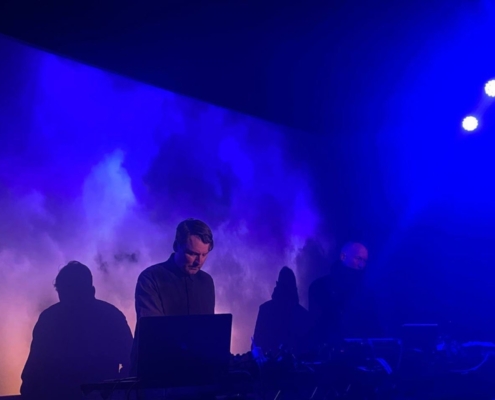How and when have you decided to become an artist?
The realisation of being an artist came when I started to shed functionality and concentrate solely on expressive aspects. I have been circling this for quite some years until it was clear that neither my studies in architecture at the Danish Royal Academy, furniture design at the Danish School of Design, nor the years as working as a photographer were fulfilling or giving answers to what I was searching for. These, as well as my apprenticeship as a cabinetmaker, nevertheless built the foundation upon which I could unfold my artistic practice. In 2010 I had a stress-related complete burnout. It was like being reset as a person, everything needed to be rebuilt; language, social abilities, physical constitution – to heal, I isolated myself and started experimentations which dealt with trompe-l’œil and perception through photographic installations. In 2011 I decided to uproot myself, start afresh and move to Berlin and dedicate myself completely to art.
Where do you find inspiration for your works?
It has become evident for me that my process is still anchored in some form of solitude or isolation – it gives me a possibility to „digest“ whatever lingering impressions are present in my mind. At some point in the past, my „inner“ life became more extensive than my outer one and in the unspecific nothingness of thoughts there is always something that wants out. There are generally two different scenarios that let me get a hold of the fleeting themes and ideas; one is the clearing of my head – I daily find myself staring into empty space for hours on end, turning the appearing around in my head to inspect and jotting it down or letting it pass by. The other one is my daily sketching, which for the past couple of years, has been on a background of an empty white-walled, evenly lit unnamed gallery space. This gives me the possibility to creatively work with scale, materials, and the distribution of an artwork in a space, albeit an abstract one. Generally speaking, I try to let each of my ideas spread to new ideas, making my practice serial, systemic and sequential in nature – they are all part of the same and are meant to be absolutely independent but intrinsically connected, not because they are of my hand or thought, but because they all orbit communal questions.
Name 3 artists you’d like to be compared to.
I don‘t really compare myself and my work with others as such, but I do see communality in focus points, interests or similar perspectives with some artists. Three artists that I both admire and to some extent share visual and contentual aspects with, would be: Lee Ufan, for his poetic works on nature and culture, and the clarity with which his art transcends and sublimates each of the specific physical pieces that constitute the artwork. There are absolutely spectacular possibilities if one speaks in a quiet and determined voice, with intent, purpose and no hesitation – be it audibly or visually. Secondly, I would name Rachel Whiteread and her work with „negative“ space. Her vast oeuvre underlines the fact, which Samuel Beckett so precisely coined in Waiting for Godot, „There‘s no lack of void“. To be able to show the ephemeral but ever-present „in-between“, demands a great deal of perceptive clarity especially in the manifestation of it. Even though her more monumental work has a somewhat brutalist side to it, it is being balanced out by the fact that it is more or less displaced air, making her work essential as it confronts us with the very core of perception. Lastly, Donald Judd, for his on one hand uncompromising and extremely focused approach to materiality within the artwork, and on the other hand for his tirelessly involvement in fundamental discussions about the definitions of art. Although controversial in many ways, the heritage he left behind has given many a vocabulary with which not just a new visual language is apparent, but also a new intellectual perspective into art itself. The duality of his practice emphasises the fact, that what sometimes on the surface appears to be the simplest of things, can hold a vast and complex substructure that can exist without obfuscating the communicative properties of a piece.
 https://www.nastymagazine.com/wp-content/uploads/2021/05/Patricia-Piccinini-Nasty-Magazine-032-1.jpg
1066
1600
admin
https://www.nastymagazine.com/wp-content/uploads/2015/02/new-logo-basker-WHITE4.png
admin2021-05-05 13:04:172021-05-13 15:20:48Patricia Piccinini / Boundaries of the unconscious
https://www.nastymagazine.com/wp-content/uploads/2021/05/Patricia-Piccinini-Nasty-Magazine-032-1.jpg
1066
1600
admin
https://www.nastymagazine.com/wp-content/uploads/2015/02/new-logo-basker-WHITE4.png
admin2021-05-05 13:04:172021-05-13 15:20:48Patricia Piccinini / Boundaries of the unconscious












